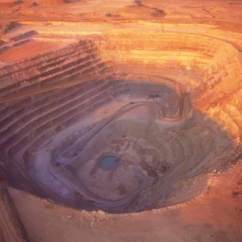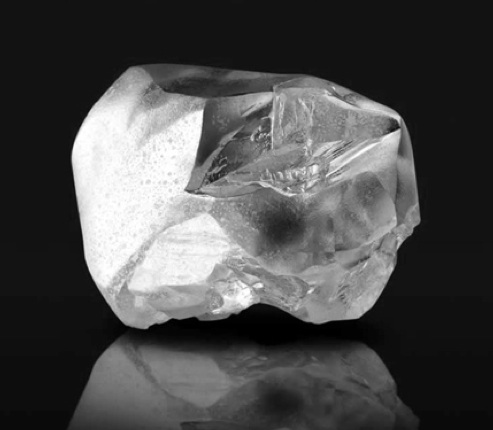Articles and News
Diamonds: A Balanced Market For Now, But Questions Remain For Better Qualities | March 19, 2014 (0 comments)

Merrick, NY—The market for diamonds among U.S. luxury consumers is solid, as evidenced by surveys of prestige jewelers’ holiday 2013 and Valentine’s Day 2014 sales. 70% of respondents to The Centurion’s holiday sales success index reported diamonds as their best-selling product for the 2013 holiday season; results were more mixed for Valentine’s Day, with diamonds leading the high end and Pandora performing strongly at the low end.
The Global Diamond Report 2013, published by Bain & Company in cooperation with the Antwerp World Diamond Centre, says the next four years should be fairly balanced for the market—but longer term, diamond demand will outstrip supply.
What will that mean for luxury jewelers?
Diamond prices have already recovered to pre-recession levels, and beginning in 2018, existing mines will begin to get depleted. Over 10 years, supply is expected to grow at a compound annual rate of about 2%, while demand grows 5.1%. In time, adequate supply of the sizes and qualities retailers need most may become challenging, especially on the luxury end.
There are some new mines slated to come online between now and 2023, estimated to add up 18 million carats a year to the pipeline. But none are nearly as large as the leading mines currently in operation. The largest of the new projects, the Gahcho Kué Mine in Canada’s Northwest Territories (De Beers and Mountain Province Diamonds) is anticipated to produce anywhere from five million to 6.1 million carats annually, but then decline sharply within 10 years. By comparison, the top 10 existing diamond mines in the world all produce at least 5 million carats each per year. The largest of these, the Orapa mine in Botswana (owned by Debswana, a joint effort of De Beers and the Government of Botswana), produces 12.9 million carats per year. Argyle in Australia (Rio Tinto) produces 12.6 million carats, and the top two mines in Russia, Jubilee and Nyurbinskaya (Alrosa), each produce roughly 9.2 to 9.3 million carats per year.
But the real concern for luxury retailers is the quality, not the quantity, of stones that can be mined. According to a just-released report by Resource Investor, the mines that produce the best qualities (as a percentage of output) are far from the largest.
Paul Zimnisky, author of the report, told The Centurion that it’s not a perfect metric, because even when a mine produces a lot of very valuable diamonds—such as the rare pinks from Australia’s Argyle mine—if the same mine also produces a lot of low-value diamonds, as Argyle does, the average carat value for the mine comes way down. But according to his research, the mines with the highest average price-per-carat of diamonds recovered are (in descending order):
- Letseng, in Lesotho (ranked at number 41 of the world’s 50 largest diamond mines by total output)
- Orange River, in Namibia (43 of 50)
- Debmarine, offshore in Namibia (17 of 50)
- Koffiefontein, South Africa (46 of 50)
- Kao, Lesotho (38 of 50)
- Karowe, Botswana (29 of 50)
None are in the top 10 and, of these, only Debmarine produces more than a million carats per year. The others produce significantly less—some fewer than 100,000 carats per year.
The Letseng mine historically produces extremely high-value diamonds. While it’s estimated to produce only 110,000 carats in 2014, its average price per carat produced is estimated around $2,200. By comparison, the global average is $130 per carat of rough produced. Luckily, Letseng’s estimated life before it’s tapped out is 33 years. Orange River is almost out; it has six years left, according to Resource Investor, but Debmarine has a hefty half-century left.

The Leseli La Letšeng, above, a 478-ct. D color, found in September 2008. It sold for $18 million. Source: Gem Diamonds Ltd. via Resource Investor.
Russia’s Alrosa is the world’s largest diamond producer by volume of carats, but none of its mines make Zimnisky’s list of high carat value. De Beers, meanwhile, is at least part owner of several of these mines, and it remains the world’s number-one producer by value.
Overall, De Beers still commands 37% of the rough diamond market, says Bain's report. Alrosa is in second place, with 30% share of market.
Zimnisky predicts a 3% increase in the amount of rough mined in 2014 over 2013 figures. In an exclusive interview, he also told The Centurion that demand for diamonds for investment purposes will increase—but not enough to significantly alter the market dynamics.
“Investment demand for physical diamonds is primarily coming from high-net-worth individuals, primarily in Asia, buying high quality stones and putting them away in safe boxes. Currently, diamond investment only represents a tiny fraction—probably less than 1%—of total diamond demand, compared with about 40% for gold. So there is definitely room for that number to grow.

Diamond investors today seek mega-stones, such as this ring set with a D-flawless rectangular-cut diamond, approximately 52.58 cts., and flanked on either side by tapered baguette-cut diamonds, in platinum. It sold for $10.9 million last fall at Christies.
“I think there are investors that would like the option of buying diamonds to diversify their hard asset, gold-heavy portfolios, and I think situations like the one in India where the government is artificially making gold less appealing by raising import duties, will naturally draw more attention to diamonds as an investment,” he said.
The global investment community is beginning to take notice of physical diamond investing, he added, through the emergence of new business created attempting to securitize physical diamonds for investors. But even if diamond investment demand triples from its current levels, it won’t be enough to move the needle on overall demand, he told The Centurion. And his sentiments regarding the investment value of mega-stones echo those of other jewelry industry experts.
Here are some other key findings from the Bain report:
- The United States remains the world’s largest diamond jewelry market by a comfortable margin.
- Diamond jewelry sales growth in the United States is roughly in line with overall economic growth.
- Global diamond jewelry growth typically follows growth in luxury goods overall, which has registered about 12% annual growth over the past three years.
- Diamond markets in India and China are still growing, but have slowed from previous years.
- Through the three stages of the diamond supply chain (mining, manufacturing, and retail), the price per carat multiplies eightfold or more.
- Profit margins are highest (16% to 20%) for upstream players (mining), and lowest (1% to 8%) among middle-market players like cutters, polishers, and manufacturers.
- Both upstream (producer) and downstream (retail) players continue to put pressure on the middle (cutting/manufacturing) sector, which is likely to continue contracting and consolidating.
- Ethics have become very important to consumers in Western markets. They want diamonds, but not those financing warlords or terrorists. Ethics have little impact on markets outside the West.
- Of the six diamond hubs in the middle sector of the supply chain, New York ranks third, with annual diamond turnover between $35 and $40 billion. Antwerp is the largest, and Dubai ranks second. Dubai, Mumbai, and Hong Kong attract trade through favorable legislation, while Antwerp, New York, and Tel Aviv increasingly focus on high-value stones and attract trade through infrastructure.
- In developed markets, demand for diamond jewelry is driven primarily by changes in personal income. In emerging markets, it’s driven more by a growing middle class, urbanization, and the adoption rate of Western consumption habits such as the diamond engagement ring tradition.
Top image: De Beers' Jwaneng mine in Botswana. Photo, De Beers







